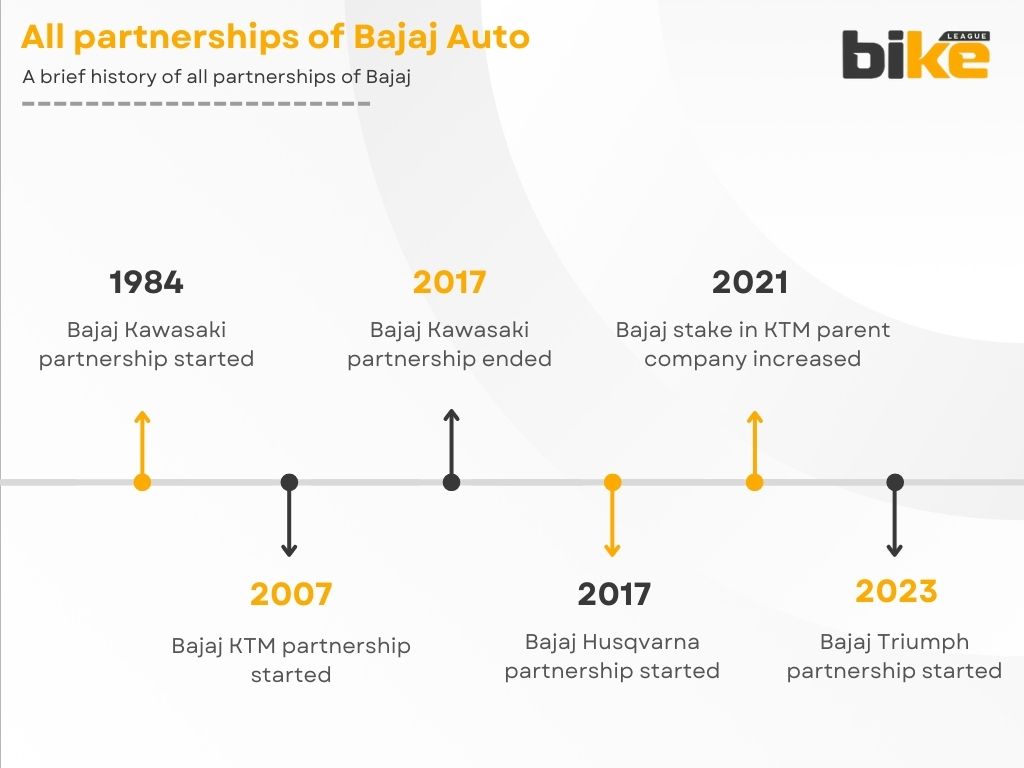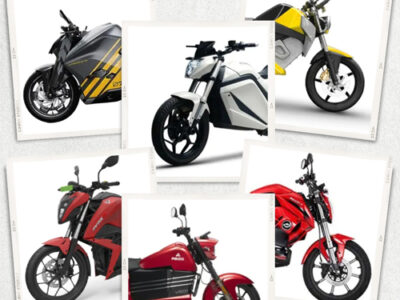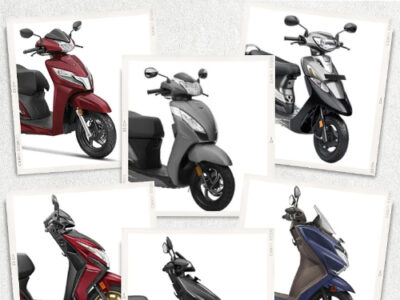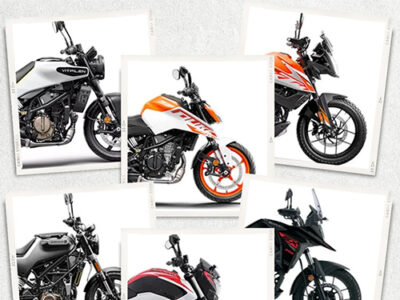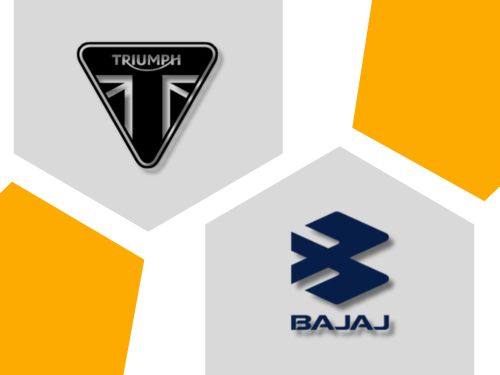
|
Getting your Trinity Audio player ready...
|
Long story short: Find out all the past and current Bajaj partnerships in India, like KTM, Kawasaki, and Triumph partnership right here.
As we all know, Bajaj is one of India’s top motorcycle manufacturing companies and comes in the top 5 when considering sales volume alone. Regarding R&D and business partnerships, Bajaj is always ahead of competitors with tactical partnerships with premium motorcycle companies.
By the year 2023 itself, they had made around 4-5 strategic partnerships, which is remarkable. Collaboration is always challenging as both parties should agree on terms and conditions. First, let’s talk about the benefits and drawbacks for domestic, foreign, and Indian customers following all of Bajaj’s partnerships in India to date.
Benefits for Domestic Motorcycle Companies-bajaj partnerships
1. Access to Advanced Technology and Expertise
Indian brands leverage international partnerships for advanced technology, enabling the production of high-quality motorcycles. This technological infusion helps Indian companies enhance their competitiveness in the market.
2. Enhanced Product Offerings
Collaborations allow Indian brands to integrate international design and performance standards into their products, attracting a broader customer base and improving market competitiveness. This results in a more diverse and appealing product lineup for consumers.
3. Brand Association and Global Reach
Partnerships with renowned international brands enhance the reputation of Indian companies, providing a brand rub-off effect that can increase their global reach and market presence. This association is crucial for Indian brands aiming to expand beyond domestic borders.
Benefits for Foreign Motorcycle Companies
1. Market Access and Distribution
Collaborations with Indian companies provide international brands access to one of the world’s largest motorcycle markets. They can leverage the extensive dealership networks of Indian companies, facilitating wider distribution and market penetration.
2. Cost-Effective Manufacturing
Indian manufacturers offer cost advantages due to their established manufacturing capabilities and access to affordable raw materials. This allows international brands to produce motorcycles at competitive prices, making them more accessible to the Indian consumer.
3. Local Market Insights
Partnerships provide international brands with critical market insights and a deeper understanding of local consumer preferences, which are essential for tailoring products to meet the demands of the Indian market.
Benefits for Indian Customers-bajaj partnerships
1. Access to Advanced Technology and Diverse Product Offerings
Indian customers benefit from a wider range of motorcycle options, including products with advanced technology and international design standards. This diversity provides consumers with more choices and access to globally competitive products.
2. Competitive Pricing and Quality Assurance
Cost-effective manufacturing and strategic alliances enable motorcycles to be offered at competitive prices, providing better value for money. Additionally, partnerships with international brands ensure that Indian customers receive motorcycles built to global quality standards, enhancing the overall ownership experience.
Drawbacks for Domestic Motorcycle Companies-bajaj partnerships
1. Increased Competition
The entry of international brands through partnerships intensifies competition in the premium motorcycle segment. Established Indian brands may face a potential market share erosion as international brands introduce competitive products, potentially shifting customer preferences.
2. Complexity in Managing Partnerships
Managing partnerships can be complex, requiring alignment of business strategies, cultures, and operational practices. This complexity can lead to challenges in executing joint ventures effectively.
Drawbacks for Foreign Motorcycle Companies-bajaj partnerships
1. Dependency on Local Partners
International brands may rely heavily on their Indian partners for market access and distribution, potentially limiting their strategic flexibility and control over operations.
2. Cultural and Operational Challenges
Aligning business strategies and operational practices across different cultures can be challenging, potentially leading to inefficiencies and conflicts within the partnership.
Drawbacks for Indian Customers-bajaj partnerships
1. Market Saturation and Quality Concerns
Increased partnerships may lead to market saturation, with an overwhelming number of motorcycle options, making it challenging for customers to make informed purchasing decisions. Additionally, rapid expansion and increased competition may lead to compromises in quality as companies strive to meet market demands.
2. Limited Customization and Service Expectations
With a focus on mass production and standardization, partnerships may limit the availability of customized or personalized motorcycle options for Indian customers. Furthermore, Indian dealers may not initially meet the high levels of customer service expected by customers of international brands, posing a challenge to customer satisfaction.
A brief history of all Bajaj partnerships in India
1. Bajaj-Kawasaki partnership in india-bajaj partnerships
A significant turning point for Bajaj came in 1984 when it entered a technical assistance agreement with Kawasaki, a renowned Japanese motorcycle manufacturer. This partnership with Kawasaki made the Bajaj company transition from a scooter-centric company to a broader two-wheeler leader, leading to the development of performance-focused motorcycles like the Pulsar.This continued until 2017, when the Bajaj-Kawasaki partnership for sales and services in India came to an end.
2. Bajaj-KTM partnership-bajaj partnerships
In 2007, Bajaj Auto purchased a 14.5% stake in the Austrian company KTM AG, marking the beginning of a fruitful partnership. This collaboration aimed to democratize motorcycle racing in India and expand operations to developed markets such as Europe, Canada, Australia, and Japan. Bajaj Auto manufactures small-displacement KTM and Husqvarna motorcycles at its Chakan plant in Maharashtra.The Bajaj partnerships with KTM have been beneficial, with KTM’s Indian operations starting in 2012 and creating a premium sports motorcycle segment in India.
3. Bajaj-Husqvarna partnership-bajaj partnerships
Husqvarna is part of the KTM AG group, which owns motorcycle brands KTM and Husqvarna. Bajaj Auto manufactures sub-500cc motorcycles for KTM and Husqvarna in India. Some models are sold within India, while others are exported to several countries. Bajaj extended its partnership with Husqvarna in 2020, further solidifying its position in the premium motorcycle segment. This extension allowed Bajaj to leverage KTM’s advanced technology and expand its portfolio.
4. Bajaj-Triumph partnership in India-bajaj partnerships
On April 10th, 2023, it was announced that Bajaj Auto Ltd and Triumph Motorcycles Ltd had successfully transferred Triumph’s India Sales & Marketing operations to Bajaj Auto. The partnership follows the announcement back in 2020 of the strategic partnership between the bajaj and triumph companies. Collaboration confirmed that they would collaborate to create a new range of mid-sized Triumph Motorcycles. The agreement launches the next partnership phase, effective April 1st, 2023.From this date, all the current 15 Triumph Motorcycle dealerships will be managed under the Bajaj partnership.
These are the official words taken from the press release of Bajaj Auto Ltd on their official website. As we have already discussed, we have seen a typical partnership between Bajaj and Triumph over the past decades. Bajaj Auto Pvt Ltd will handle Triumph India’s sales and marketing. Meanwhile, the mid-sized Triumph motorcycles will be manufactured collaboratively.
FAQ related to Bajaj partnerships in India
1. What was the significance of the Bajaj-Kawasaki partnership?
The Bajaj-Kawasaki partnership began in 1986 with the launch of the KB100 motorcycle. This collaboration marked Bajaj’s entry into the motorcycle segment, transitioning from its earlier focus on scooters. The partnership helped Bajaj establish a foothold in the motorcycle market.
2. What technological advancements have resulted from Bajaj’s partnerships?
Bajaj’s partnership with KTM allowed it to access advanced motorcycle technology, such as liquid-cooled engines, which Bajaj had not developed independently before. This technological exchange has been crucial in enhancing Bajaj’s product offerings.
3. What are the future plans for Bajaj’s partnerships?
Bajaj is working with its partners to develop and manufacture electric bikes for the Indian market. This move aligns with the global shift towards sustainable transportation and positions Bajaj as a forward-thinking player in the industry.
4. When did Bajaj Auto first partner with KTM?
Bajaj Auto entered into a strategic alliance with KTM in 2007. This partnership aimed to produce high-performance racing bikes in India, such as the KTM 390 series, and has been instrumental in bringing advanced motorcycle technology to the Indian market.
5. How has the Bajaj-KTM partnership evolved over the years?
Since its inception, the Bajaj-KTM partnership has grown significantly. Bajaj increased its stake in KTM to 48%, and the collaboration has led to the manufacturing of small-displacement KTM and Husqvarna motorcycles at Bajaj’s Chakan plant in Maharashtra. This partnership has also created a premium sports motorcycle segment in India.
6.What role does Bajaj play in the global motorcycle market?
Bajaj Auto is one of India’s largest manufacturers of two- and three-wheeled vehicles. It exports its motorcycles to various countries across Asia, Latin America, Africa, and the Middle East. Its strategic partnerships have helped it gain a significant share in the global motorcycle market.
7. How has the Bajaj partnership with ktm benefited both companies?
The Bajaj-KTM partnerships has been mutually beneficial, with KTM’s Indian operations beginning in 2012. The collaboration has led to a rapid increase in demand for both Bajaj and KTM bikes, with KTM recording significant sales growth in India.
8. What is the benefit to the government of India from such partnerships?
The motive of the Honourable Government of India is to invite companies to invest in India rather than just import, as it can bring more jobs within India. In sales and marketing, most Indian companies provide space for foreign company models to exhibit their products within their showrooms. When foreign companies agree with local manufacturing within India with the help of the business partner, they can export models from India to other parts of the world. The main USP behind this is that labor and additional costs are meager in developing countries like India.
Other related articles from Bikeleague India
- The top 10 bike brands dominating India’s market share
- Oldest motorcycle brands that have stood the test of time
- Best bike tyre brands for your motorcycle in India
- Motorcycle riding style – How to choose your perfect bike
- KTM 390 Adventure
Conclusion
Business collaboration always benefits both parties and always tries to create a win-win situation.In the case of the Bajaj partnerships in India, including the Bajaj-Triumph partnership, which helps customers, as we discussed above. Most Indian customers know that collaborations are great and will benefit everyone.”The only thing we must see here is how long the Bajaj-Triumph partnership, along with the Bajaj-KTM partnership and the Bajaj-Kawasaki partnership, will last.
If you have any other doubts or queries, email us at bikeleague2017@gmail.com. You can also share your doubts or opinions in the comments section below. We are always eager to help and assist you. Also, here are several social media platforms of Bikeleague India to raise your suspicions.

